|
|
|

|
|||||

|
|

Paint and coating manufacturer Sherwin-Williams (NYSE:SHW) announced better-than-expected revenue in Q3 CY2025, with sales up 3.2% year on year to $6.36 billion. The company expects next quarter’s revenue to be around $5.43 billion, close to analysts’ estimates. Its non-GAAP profit of $3.59 per share was 4.4% above analysts’ consensus estimates.
Is now the time to buy Sherwin-Williams? Find out by accessing our full research report, it’s free for active Edge members.
Widely known for its success in the paint industry, Sherwin-Williams (NYSE:SHW) is a manufacturer of paints, coatings, and related products.
A company’s long-term sales performance is one signal of its overall quality. Even a bad business can shine for one or two quarters, but a top-tier one grows for years. Regrettably, Sherwin-Williams’s sales grew at a tepid 5.3% compounded annual growth rate over the last five years. This was below our standard for the industrials sector and is a rough starting point for our analysis.
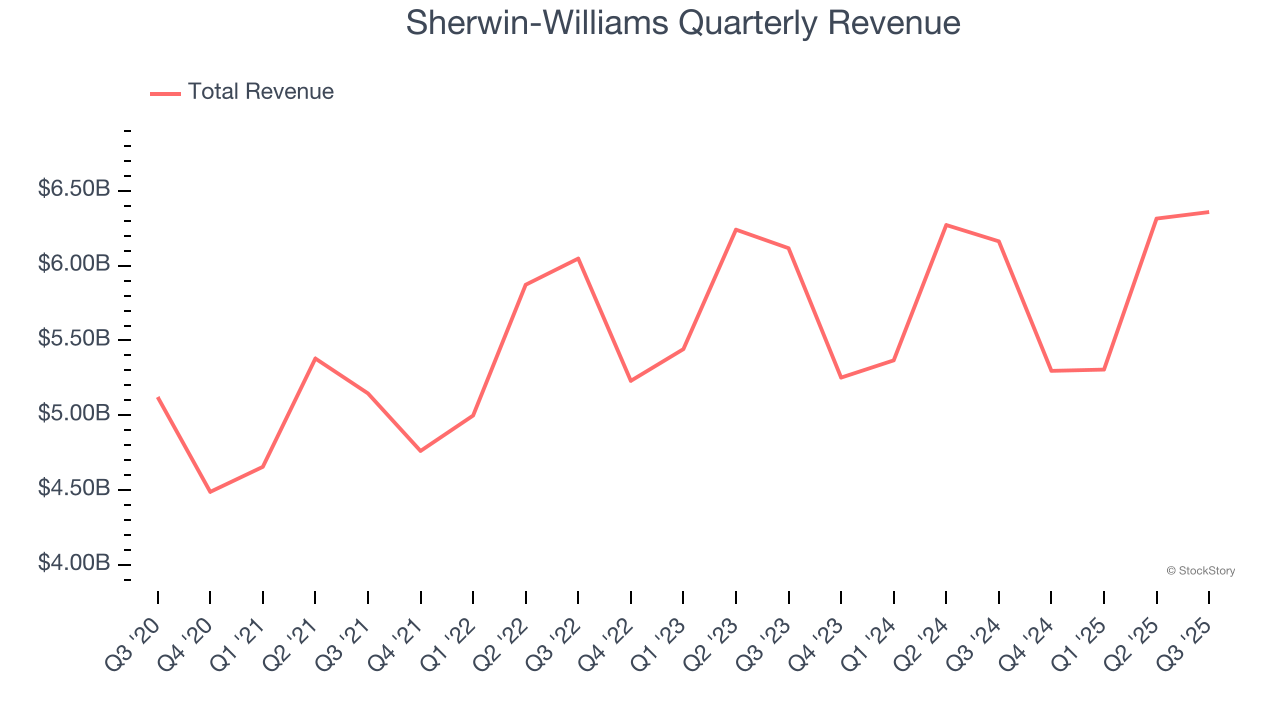
Long-term growth is the most important, but within industrials, a half-decade historical view may miss new industry trends or demand cycles. Sherwin-Williams’s recent performance shows its demand has slowed as its revenue was flat over the last two years.
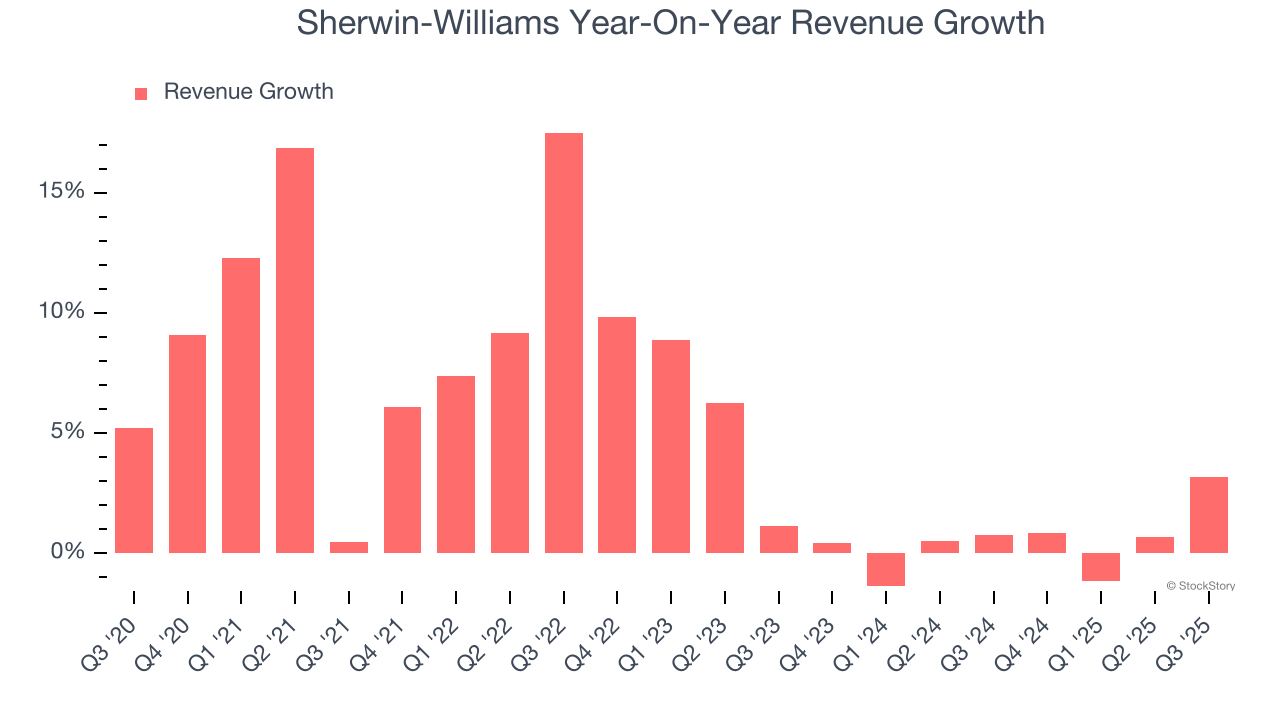
This quarter, Sherwin-Williams reported modest year-on-year revenue growth of 3.2% but beat Wall Street’s estimates by 2.6%. Company management is currently guiding for a 2.5% year-on-year increase in sales next quarter.
Looking further ahead, sell-side analysts expect revenue to grow 3.1% over the next 12 months. While this projection implies its newer products and services will spur better top-line performance, it is still below the sector average.
Software is eating the world and there is virtually no industry left that has been untouched by it. That drives increasing demand for tools helping software developers do their jobs, whether it be monitoring critical cloud infrastructure, integrating audio and video functionality, or ensuring smooth content streaming. Click here to access a free report on our 3 favorite stocks to play this generational megatrend.
Sherwin-Williams has been an efficient company over the last five years. It was one of the more profitable businesses in the industrials sector, boasting an average operating margin of 14.9%. This result isn’t surprising as its high gross margin gives it a favorable starting point.
Analyzing the trend in its profitability, Sherwin-Williams’s operating margin rose by 2.1 percentage points over the last five years, as its sales growth gave it operating leverage.
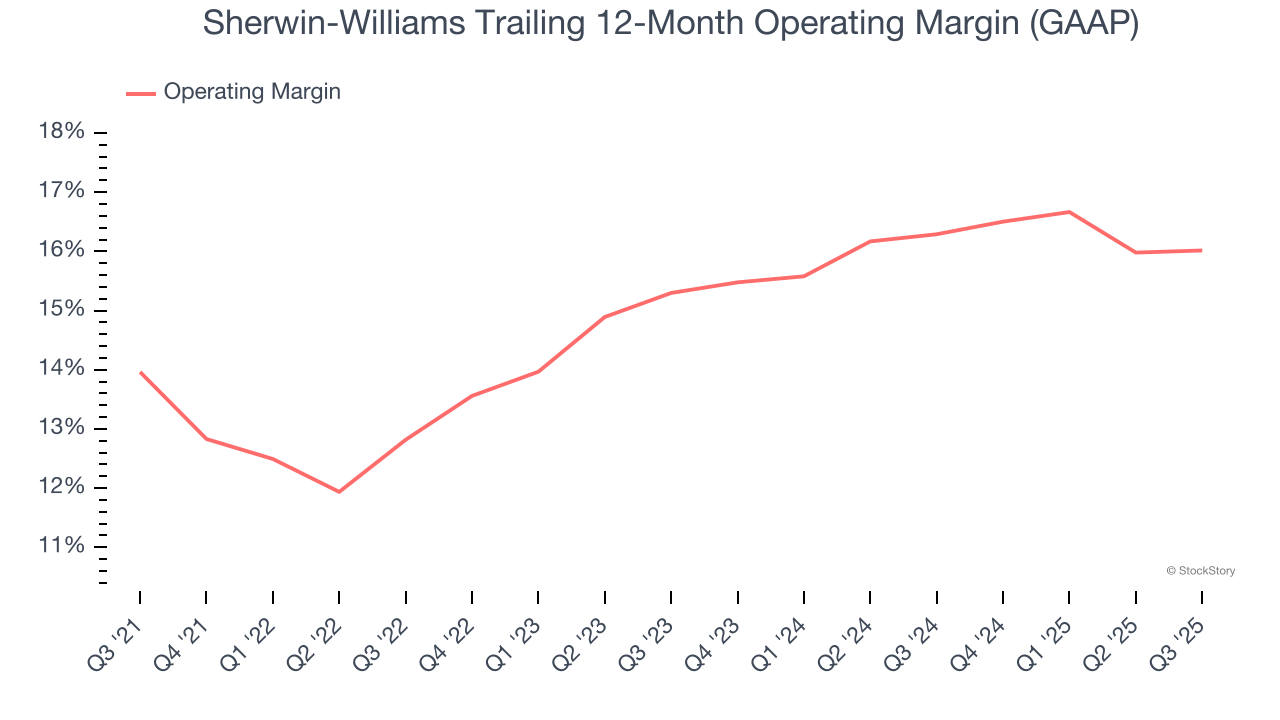
In Q3, Sherwin-Williams generated an operating margin profit margin of 18.4%, in line with the same quarter last year. This indicates the company’s cost structure has recently been stable.
Revenue trends explain a company’s historical growth, but the long-term change in earnings per share (EPS) points to the profitability of that growth – for example, a company could inflate its sales through excessive spending on advertising and promotions.
Sherwin-Williams’s EPS grew at an unimpressive 7.4% compounded annual growth rate over the last five years. On the bright side, this performance was better than its 5.3% annualized revenue growth and tells us the company became more profitable on a per-share basis as it expanded.
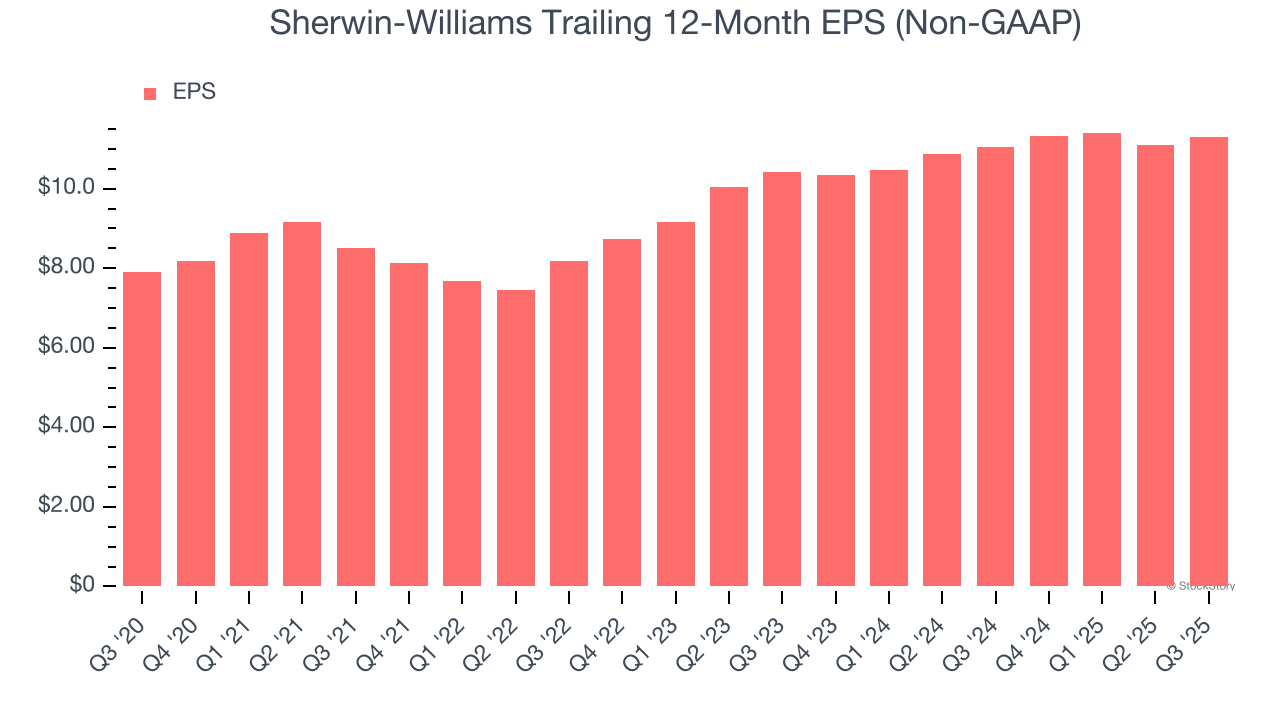
We can take a deeper look into Sherwin-Williams’s earnings to better understand the drivers of its performance. As we mentioned earlier, Sherwin-Williams’s operating margin was flat this quarter but expanded by 2.1 percentage points over the last five years. On top of that, its share count shrank by 9.9%. These are positive signs for shareholders because improving profitability and share buybacks turbocharge EPS growth relative to revenue growth.
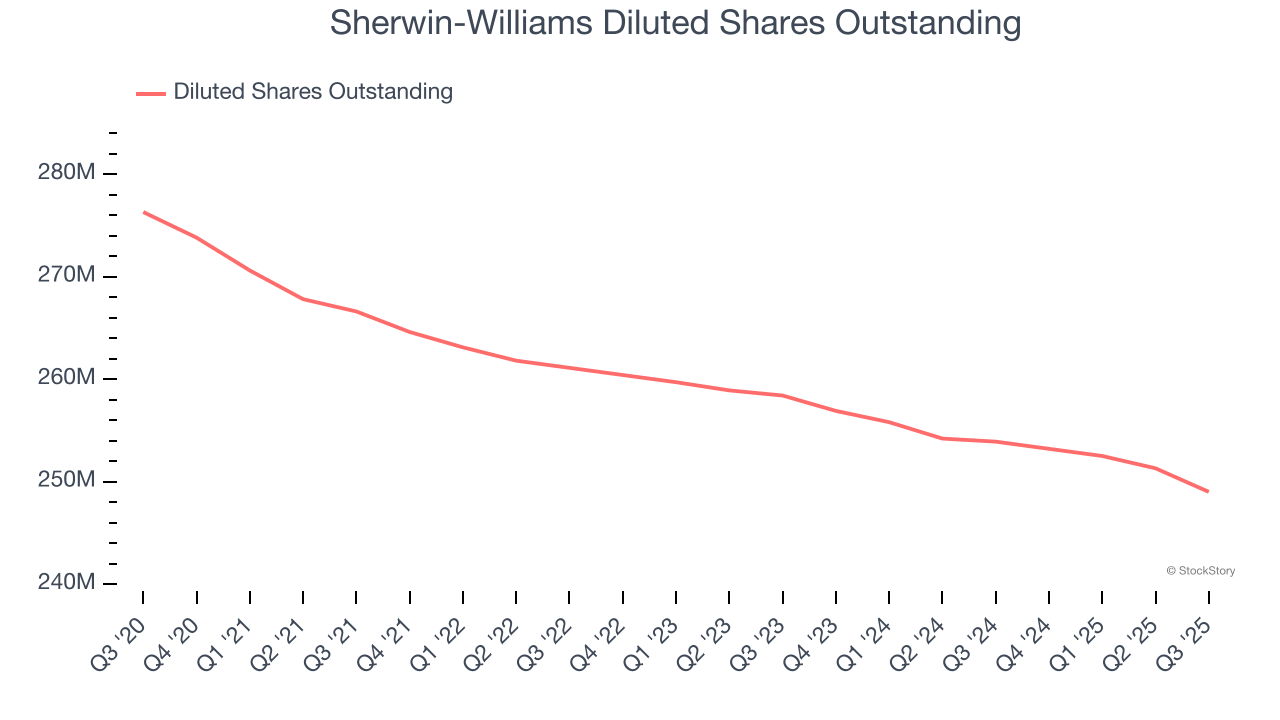
Like with revenue, we analyze EPS over a more recent period because it can provide insight into an emerging theme or development for the business.
For Sherwin-Williams, its two-year annual EPS growth of 4.2% was lower than its five-year trend. We hope its growth can accelerate in the future.
In Q3, Sherwin-Williams reported adjusted EPS of $3.59, up from $3.37 in the same quarter last year. This print beat analysts’ estimates by 4.4%. Over the next 12 months, Wall Street expects Sherwin-Williams’s full-year EPS of $11.31 to grow 8.1%.
We enjoyed seeing Sherwin-Williams beat analysts’ revenue expectations this quarter. We were also happy its EBITDA outperformed Wall Street’s estimates. Overall, this print had some key positives. The stock traded up 5.3% to $354.03 immediately after reporting.
Sherwin-Williams put up rock-solid earnings, but one quarter doesn’t necessarily make the stock a buy. Let’s see if this is a good investment. What happened in the latest quarter matters, but not as much as longer-term business quality and valuation, when deciding whether to invest in this stock. We cover that in our actionable full research report which you can read here, it’s free for active Edge members.
| Dec-08 | |
| Dec-04 | |
| Nov-27 | |
| Nov-25 | |
| Nov-24 | |
| Nov-21 | |
| Nov-21 | |
| Nov-21 |
Stock Market Today: Dow Soars 700 Points; Nvidia Climbs Off Lows After Earnings Carnage (Live Coverage)
SHW
Investor's Business Daily
|
| Nov-14 | |
| Nov-13 | |
| Nov-12 | |
| Nov-08 | |
| Nov-07 | |
| Nov-07 |
Stock Market Today: Dow, S&P 500 Eke Out Gains; Palantir, Nvidia Close Higher (Live Coverage)
SHW
Investor's Business Daily
|
| Nov-07 |
Stock Market Today: Dow Flirts With Positive Territory; Palantir Reverses Higher (Live Coverage)
SHW
Investor's Business Daily
|
Join thousands of traders who make more informed decisions with our premium features. Real-time quotes, advanced visualizations, backtesting, and much more.
Learn more about FINVIZ*Elite